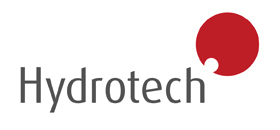|
|
|
Electro-osmotic Technology
Groundwater intrusion through a building’s
foundation can cause serious damage. In addition
to increased concrete deterioration and accelerated
rebar corrosion, basement dampness can ruin
expensive electrical and mechanical equipment,
which is often located in basement areas; can
increase maintenance requirements through frequent
repainting or cleaning to combat mould growth,
and can make affected areas uninhabitable or
even unusable due to poor air quality.
In selective problem areas, the usual approach
to the treatment of water intrusion problems
is to ‘trench and drain’, in other
words, to excavate and expose the wall area
and the base of the foundation, to replace waterproofing
on the wall surface, and to install a drain
tile system around the building or affected
area. Other areas, such as floors, are untreatable
using conventional methods.
MPS offers an alternative that can mitigate
some water-related problems from the interior
of affected areas without the cost of excavation.
Further, by lessening water seepage through
concrete walls and floors, indoor humidity is
reduced, thereby alleviating corrosion damage
to mechanical equipment, lessening mould problems
and enhancing indoor air quality.
In 1809, F.F. Reuss originally described electro-osmosis
in an experiment that showed that water could
be forced to flow through a clay-water system
when an external electric field was applied
to the soil. Research since then has shown that
flow is initiated by the movement of cations
(positively charged ions) present in the pore
fluid of clay, or similar porous medium such
as concrete, and the water surrounding the cations
moves with them. The basic physics and chemistry
of electro-osmosis can be found in several textbooks
and treatises (e.g. Glasstone, 1946 and Tikhomolova,
1993).
MPS functions
by means of a pulse sequence which results in
the pore fluid moving generally in one direction.
The amplitude of the signal is typically between
20 and 40 Volts DC (VDC). The positive electrical
pulse causes cations (e.g., Ca++) and associated
water molecules to move from the dry side towards
the wet side, against the direction of flow
induced by the hydraulic gradient, thus preventing
water penetration through the below-grade concrete
structure. The amount of moisture within the
concrete can be controlled in order to prevent
over-drying of the concrete matrix and subsequent
degradation.
An MPS installation involves inserting anodes
(positive electrodes) into the concrete wall
or floor on the inside of the structure and
by placing cathodes (negative electrodes) in
the soil directly outside the structure. The
density of the anode and cathode placement is
determined from initial resistivity tests of
the masonry structure and the soil. The objective
is to achieve a certain current density and
thus create an electrical field strength in
the masonry structure sufficient to overcome
the force exerted on the water molecules by
the hydraulic gradient.
The focus of research
and development for the MPS system over the
past 10 years has been to gain a full understanding
of the physics of reverse osmotic technology
and to apply that knowledge to the development
of a commercially viable system which would
perform to specified criteria in many and varied
practical applications. The key to the MPS system’s
proven capability is the application of this
advanced proprietary technology for the control
of the electro-osmotic multi pulse sequencing
and amplitude through sophisticated control
and regulatory mechanisms.
|
|

